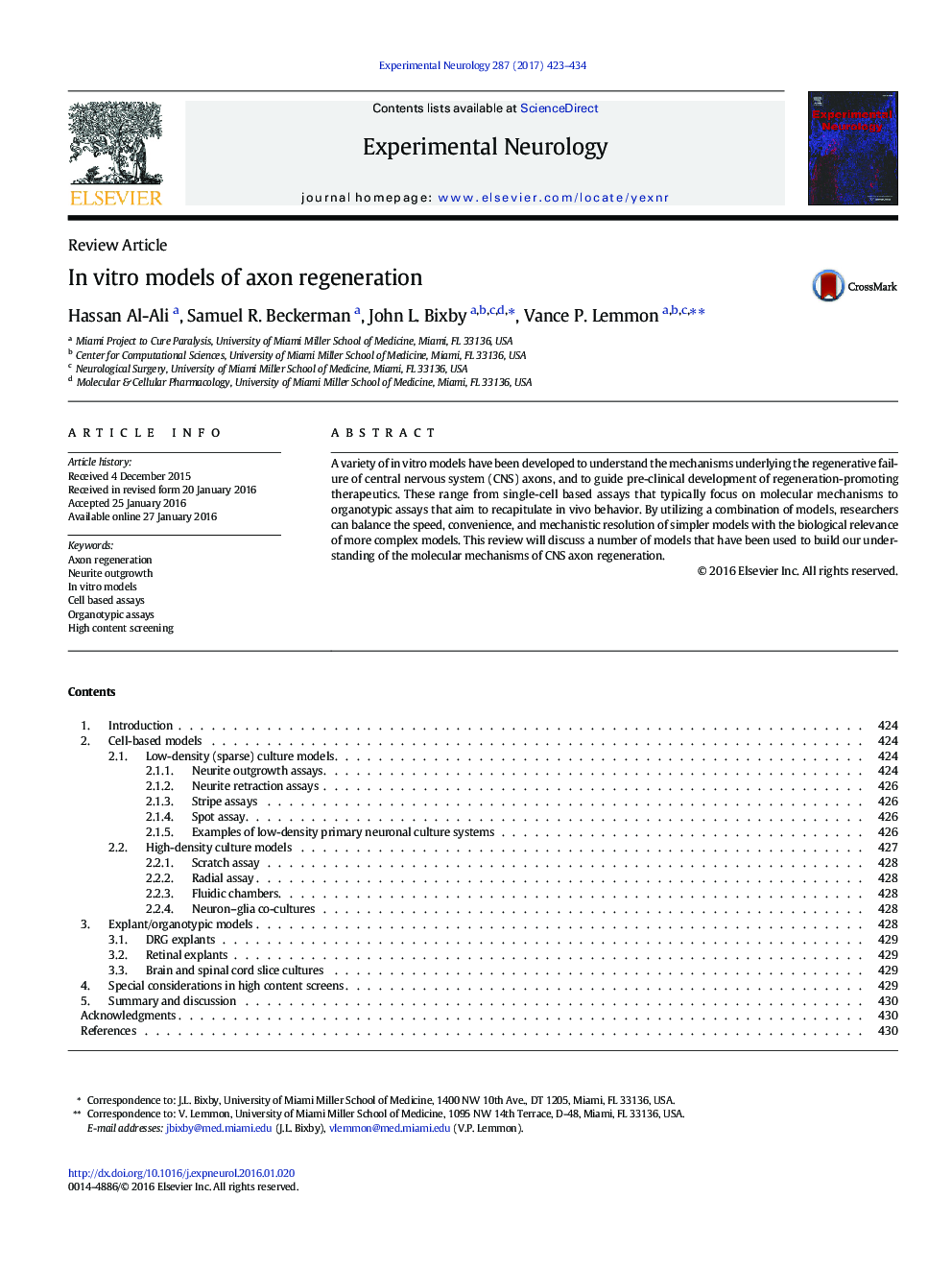| Article ID | Journal | Published Year | Pages | File Type |
|---|---|---|---|---|
| 5629185 | Experimental Neurology | 2017 | 12 Pages |
Abstract
A variety of in vitro models have been developed to understand the mechanisms underlying the regenerative failure of central nervous system (CNS) axons, and to guide pre-clinical development of regeneration-promoting therapeutics. These range from single-cell based assays that typically focus on molecular mechanisms to organotypic assays that aim to recapitulate in vivo behavior. By utilizing a combination of models, researchers can balance the speed, convenience, and mechanistic resolution of simpler models with the biological relevance of more complex models. This review will discuss a number of models that have been used to build our understanding of the molecular mechanisms of CNS axon regeneration.
Related Topics
Life Sciences
Neuroscience
Neurology
Authors
Hassan Al-Ali, Samuel R. Beckerman, John L. Bixby, Vance P. Lemmon,
